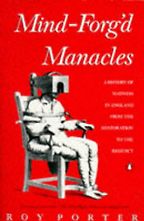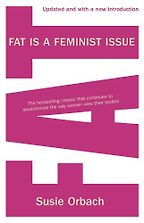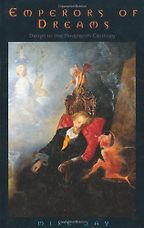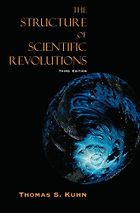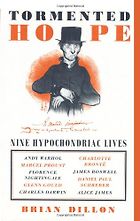How far back does the history of medicine go?
You need to go right back into antiquity. I begin with the Greeks and Romans, because Greek and Roman medicine – the work of [the Greek physicians] Hippocrates and Galen in the main – is the foundation of our western medicine. Those ideas were still current up until the 18th century and what we call the “rise of science”.
What kind of practices did they follow in Greek and Roman times?
It was basically how to live well – not just as an individual but in society. There were various different theories, but it was largely that what you eat is what you are. They would treat illnesses first by diet and as a very last resort by the knife. They also had theories about how you use your body, and the importance of exercise and sleep. So it was all about sensible, moderate living.
Things haven’t changed that much in modern times.
You’re right. They also thought that by looking after yourself you are looking after society as well. So you have a moral responsibility to look after yourself.
Which ties in with debates we are having in the UK regarding what the National Health Service is for, and whether we should be spending so much money on treating people who harm themselves by smoking or getting drunk.
Yes, it’s all very relevant.
Let’s have a look at some of your books. Your first choice is Thomas S Kuhn’s Structure of Scientific Revolutions, which has been described as a landmark in intellectual history. What was Kuhn writing about?
Kuhn was a famous American philosopher of science, and in this book he was writing about paradigm shifts: how the scientific community, and therefore eventually all of us, change our world views. He looks at where those revisionary revolutions in thought come from. Instead of it being a straightforward ladder of progress, you never know where knowledge is going to come from. It can come from left field, and the book is full of examples of that sort of paradigm shift.
Such as?
Well, Kuhn recounts the shift in the way nature was understood in the 18th century, after Antoine Laurent Lavoisier “saw” oxygen where others had seen nothing at all, and from this followed changes in the views on other familiar substances. The world was perceived differently after that, the facts had changed. The history of medicine is full of diseases we no longer suffer from because they aren’t deemed to exist any longer – neurasthenia, peculiar to brain-workers, for example, or chlorosis, peculiar to virgins.
Why did this book have such a big impact on you?
When I was an undergraduate, it was one of those few books that changed my ideas of very fundamental issues. I discovered that what I thought of as a truth or a fact could completely shift. A fact is a mutable thing, it can change and I had never thought about it like that before. It was a very revolutionary book for me.
So it is all about where perceptions come from.
Yes. It completely changed the way I thought about what I was doing, what other people do, how dogmatic some people can be and how they get trapped in alleyways of thought and ideas.
Next up is Mind-Forg’d Manacles by Roy Porter.
I could have chosen any book by Porter, but this one is my favourite. Roy Porter died far too young. He was the most exuberant man, and the generosity and excitement that he had in everyday life enthused all his books. He was meticulous in his research, and he wrote the most fantastically lucid prose. It was the most elegant stuff, and he was a historian who really taught me how to think.
This particular book is about how madness was treated from Restoration times in the late 17th century right up to the Regency at the start of the 19th century.
Yes. The book is all about notions of what insanity is, how we viewed it and what the treatments were. For example there was a category called moral insanity, which is obviously much more to do with how we policed people’s behaviour than any pathological condition. So this is a book about perception as well.
How was insanity viewed in Restoration times?
It was all about behaviour; some behaviours didn’t necessarily fit and so were deemed “mad”.
“There was a category called moral insanity, which is obviously much more to do with how we policed people’s behaviour than any pathological condition.”
Some physicians were more enlightened than others, but there wasn’t much they could do. The church also had quite a lot to say about the wages of sin, the uncontrollable ways in which some people acted and how they should be treated.
What did they think should happen to them?
For the most part, in the earlier period, they locked the insane away in “shit, straw and stench”. Many people just didn’t have the money for the private asylums or medical treatments available, so they were confined in dreadful conditions, shackled and tormented, bled and blistered.
That still happens in some parts of the world.
Yes, it is still going on. And up until the 18th century, people visited Bedlam for a day out to see the mad people.
How do you think our views on madness have changed?
There is still a great deal of stigma attached to mental illness. I think people are pilloried in the press in one way or another, regardless of how whatever it is that has happened to them comes to light. But of course, now there are more sophisticated therapies and drug treatments, rather than the traditional “remedies” and sedatives of opiates and alcohol.
And to some degree people who suffer from mental illnesses are integrated more into the community.
In the UK, that all stems from when Margaret Thatcher came to power, and so-called “care in the community”. But now you see a great many more people on the streets who would have been in caring institutions. “Care in the community” is a bit like David Cameron’s “big society” – a great idea in theory but problematic to put into practice.
One last comment on Porter. I read him as an undergraduate and I still re-read his books. Many of the history books I read as a student I wanted to throw across the room, but Porter’s books I wanted to take to bed with me. It really is great if you find an historian who is so engaging that they make you want to find out more and read more – even though the subject could seem quite dry. So in a subject like the history of medicine, which is instantly related to the personal, Porter is an excellent guide.
Your next book, Brian Dillon’s Tormented Hope, takes a look at the lives of nine hypochondriacs.
This is a great book. I think Brian Dillon is also very good at relating things to the personal. He looks with enormous insight at the idea of hypochondria – also an ancient notion. Before Freud, it was thought to have to do with the digestive system. After Freud, it became more of a psychological condition and an illness in itself. Hypochondria has become a bit of a pejorative term. We tend to think it is the most ridiculous notion to be one of the “worried well” who are always checking themselves.
Dillon examines nine lives of well-known figures who were also hypochondriacs. He writes about James Boswell, Charlotte Bronte, Charles Darwin, Florence Nightingale, Alice James, Daniel Paul Schreber, Marcel Proust, Glenn Gould and Andy Warhol. Even though they were thinkers and cultural icons, they were almost disabled by their hypochondria, powerlessness and fear.
Are there any details of their lives that you found particularly interesting?
I find the extremes to which their illness went very interesting. There was also a sense of alienation and isolation that came from being obsessed by what these people thought of as their bodies’ betrayal of them. [The German judge] Daniel Paul Schreber, one of the case studies in the book, was commented on by Freud. He spent a lot of time confined in an asylum thinking that he was changing into a woman, that God would impregnate him and he would begin a master race, which is wild enough in itself. Later, he came to believe that his body was rotting while his mind was still alive. That is a really extreme case of hypochondria, where you become completely obsessed with yourself and the breakdown of the physical self. That goes back to Porter’s book, and the idea of the mind/body duality and how it splits, which I find utterly fascinating.
This theme continues with Susie Orbach’s book Fat is a Feminist Issue, which again is all about deception regarding the body.
This book isn’t entirely to do with the history of medicine, but it is relevant. I think it is still as important today as when it first came out in 1978. Orbach exposes our obsession with our bodies and the narcissistic nature of society. You could say that worrying and obsessing about our size and shape, how it might be improved, what diet we should go on and what surgery we should have for it, is just another version of our obsession with ourselves.
How do her ideas tally with your research in your own book Calories and Corsets?
I quote Orbach at the beginning of my book. When she wrote her book in the late seventies, she said that nothing had changed in the last 50 years, and in my book I argue that not much has changed since 1978 either. It’s an uphill struggle to get us to change our opinions about our perceptions of ourselves and how we present ourselves in society. So much of how we view our bodies is cultural, but of course it can lead to psychological problems.
But wouldn’t you agree that due to what we are eating and drinking, most of us are overweight and do need to live more healthily?
Yes, I do. I would take you right back to the Greeks and the Romans and say that we should be more interested in a long-term way of living which is good for our health, rather than obsessing over particular bits of our body. It is all about moderation.
Your next choice, Emperors of Dreams by Mike Jay, looks at the story behind the drugs scene in the 19th century.
Jay’s book is in the same area as my first book The Making of Addiction, and is a really accessible read. He does a calm run-through of luxurious drug use and orthodox drug use. One is accepted and one is not. He looks at the way our bodies are policed, and how our cultural attitudes and policies are based on ideas influenced by fear and intolerance.
What was the acceptable face of drugs in the 19th century?
Addiction becomes categorised as a disease during that period. There is the whole temperance movement, which thought that alcohol was the root of all evil. And piggy-backing on that is the anti-opiate movement and the idea of opiate addiction. But there was no legislation. There was a great deal of moral condemnation, but the politics involved in it were quite complicated because at the time Britain was involved in the Opium Wars with China.
There was a great deal of religious involvement because appetites were seen to be running amok, and there was a great deal of crime involved with drinking, as there is now. Opiate use, on the other hand, was a problem but it wasn’t viewed as so pressing, because generally people just sat tight and got smashed but didn’t do harm to others. That excuse for leaving opiates alone was used in parliament in the late 19th century, and there was no legislation against it until after the First World War.
Five Books interviews are expensive to produce. If you're enjoying this interview, please support us by donating a small amount.
The book mentions that even Queen Victoria was taking cannabis.
Yes, she was taking it for medical reasons – laudanum too, perhaps. All the opiate derivatives were the only good palliative drugs around, until Aspirin came on the market in the 1890s. So opium was a godsend, especially because of the state of early 19th century sanitation – opium kills pain and bungs you up, which was just terrific. If you had a chronic illness you could be taking opium for 30 or 40 years, as Gladstone did, and no-one would accuse you of being an addict although you were undoubtedly were. People such as Samuel Taylor Coleridge and Thomas de Quincey who took opium were reviled because they took it luxuriously. But interestingly, both of them said that they first started taking it for medical reasons.
What were you writing about in your own book about addiction?
I wanted to avoid the politics and look into the nature of addiction. I started by looking at the origins of addictions in the medical texts, for explanations about what it actually is. Instead of finding the answer, I found confusion, theories, heroes, altruism, bizarre treatments, diets, deaths and dishonesty. I didn’t find out what addiction really is. Personally I think addiction is a disease. I am not a medic or a scientist and I must emphasise that, but I do think it is not a good idea to treat a drug addiction with a drug.
“If you had a chronic illness you could be taking opium for 30 or 40 years and no-one would accuse you of being an addict although you were undoubtedly were.”
Morphine, for example, was the first refined opiate and it led to a great deal of morphine addiction, especially after the hypodermic needle was introduced in the mid-19th century. It was calculated by a Dr Jennings in the 1890s that one in four doctors in England was a morphine addict. It was such a problem that when [the German drug company] Bayer came up with heroin in that decade, it was first marketed as a cure for morphine! So it is great progress to have these refined drugs, but there are also enormous problems that go with them.
Get the weekly Five Books newsletter
What do you see as the big issues shaping the history of medicine?
I am very pleased that there are more and more women in medicine now. I think that is terrific. But I am concerned about the medicalisation of society, and the way that many aspects of our lives can now be treated with drugs. I noticed in the paper the other day that they are coming up with a drug to stop you drinking. I am sure that these things can be helpful in some cases, but to medicalise people when there are other issues that need to be addressed first is not a good idea.
Five Books aims to keep its book recommendations and interviews up to date. If you are the interviewee and would like to update your choice of books (or even just what you say about them) please email us at editor@fivebooks.com

